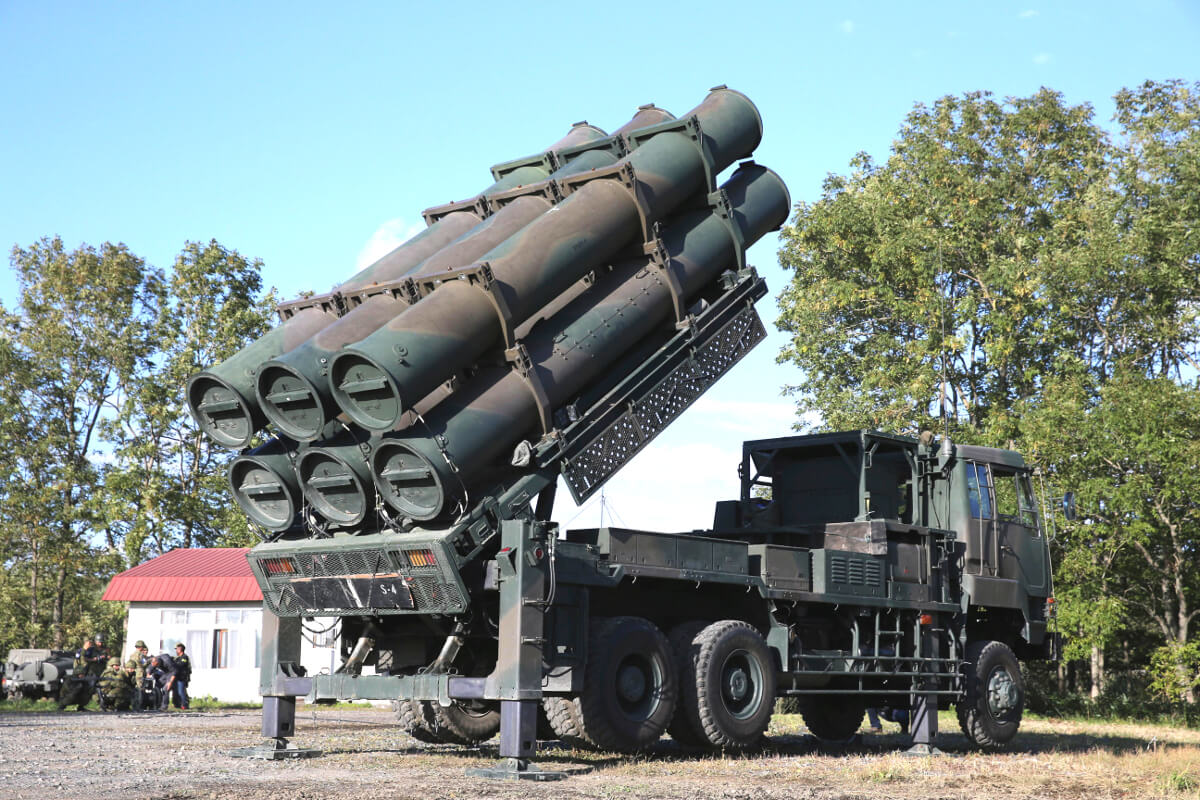Japan is considering deploying more than 1,000 long range cruise missiles as a means to narrow the “cavernous missile gap” with China, particularly against the backdrop of a growing possibility of a military emergency in Taiwan and the waters surrounding it.
Keeping this in mind, Tokyo is reportedly mulling over deploying missiles from Kyushu to the Nansei island chain in response to China deploying a rising number of ballistic missiles.
To this end, Japan is looking to expand the range of its Type 12 surface-to-ship guided missile from just over 100 kilometres to about 1,000 kilometres. This would allow the missile to reach North Korea and coastal China. It is simultaneously seeking to modify the missiles so that they can be fired from ships and fighter jets, with the goal of deploying this “modified ground-launched version” by the fiscal year 2024, two years ahead of schedule.
Local publication Yomiuri Shimbun said the reason behind the move was that the “gap between the missile attack capability” of Japan and the United States (US) had “widened too much” in comparison to China. It also noted that Japan will abandon its previous policy of not “possessing the capability to attack enemy bases” by developing longer-range missiles.
Likewise, after the signing of the Intermediate-Range Nuclear Forces Treaty with the former Soviet Union in 1987, the US was banned from possessing ground-launched missiles with a range of 500-5,500 kilometres. However, since the treaty’s expiration in August 2019, Washington has resumed their development, although it does not currently possess such missiles.
In contrast, US Department of Defense analysis shows that China may have about 300 medium-range cruise missiles and 1,900 land-based medium-range ballistic missiles that have the capability to reach Japan. In fact, China fired five ballistic missiles into waters near Japan’s Okinawa Prefecture earlier this month.
After meeting with Pelosi for breakfast, Japanese Prime Minister Fumio Kishida said the missile launched by China poses a "serious problem that impacts our national security and the safety of our citizens”, and had asked China to “immediately cancel the military exercises." pic.twitter.com/X4DCgGITWq
— Joshua Jered (@Joshuajered) August 5, 2022
North Korea, too, has also deployed “several hundred” ballistic missiles within the range of Japanese territory.
Both China and North Korea are also developing hypersonic weapons, which “fly on an irregular trajectory and are difficult to intercept.” “Under these circumstances, it has become difficult for the Self-Defense Forces to respond to enemy attacks only with interceptor missiles,” the Yomiuri Shimbun report concluded.
The news comes on the back of Prime Minister (PM) Fumio Kishida announcing in June that Japan “must be prepared for the emergence of an entity that tramples on the peace and security of other countries by force or threat without honouring the rules.” “This will be absolutely essential if Japan is to learn to survive in the new era and keep speaking out as a standard-bearer of peace,” he remarked.
Accordingly, Kishida said that Japan will announce a new ‘National Security Strategy’ by the end of the year. “I am determined to fundamentally reinforce Japan’s defence capabilities within the next five years and secure a substantial increase of Japan’s defence budget needed to effect it,” he proclaimed.
Similarly, during his speech at the 77th National Memorial Ceremony for the War Dead earlier this month, Kishida pledged to never wage war again, despite his government having significantly increased the country’s defence budget.
He noted that “conflicts have [yet] not yet ceased” in the world and to this end, assured that his government “is determined to join forces with the international community” and “do its utmost to resolve the various challenges facing the world.”
Last November, Kishida’s government added a supplementary budget of a whopping $6.75 billion to its already record annual military spending in a bid to bolster its air and maritime defences against the rising threat posed by China, Russia, and North Korea.
The Ministry of Defense’s annual white paper released last month also underscores the importance of confronting these “aggressor nations.” In the document, Defence Minister Nobuo Kishi asserted that the Indo-Pacific is “at the centre” of evolving global strategic competition, and denounced China’s ‘unilateral’ attempts to change the status quo in the East and South China Seas through “coercion.”
Aside from bolstering defence capabilities and forming strong alliances, the document recommends the use of economic and military sanctions as a deterrent force. It says this deterrent force must also be complemented by improving the defensive capabilities of the country’s SDF. To this end, it notes Japan’s increased defence expenditure, which it says will be used to expand its capabilities in the space, cyber, and electromagnetic domains. Keeping this in mind, Japan’s FY2022 annual budget increases defence spending by 1.1%, or $404 million, to around $37.8 billion. The budget proposal for FY2023 is expected to be unveiled at the end of this month.
China, meanwhile, argues that Japan is trying to hype the “China threat theory” as a way to foment regional tensions and “legitimise its ambition to develop military force and push for an amendment of its pacifist constitution.”

